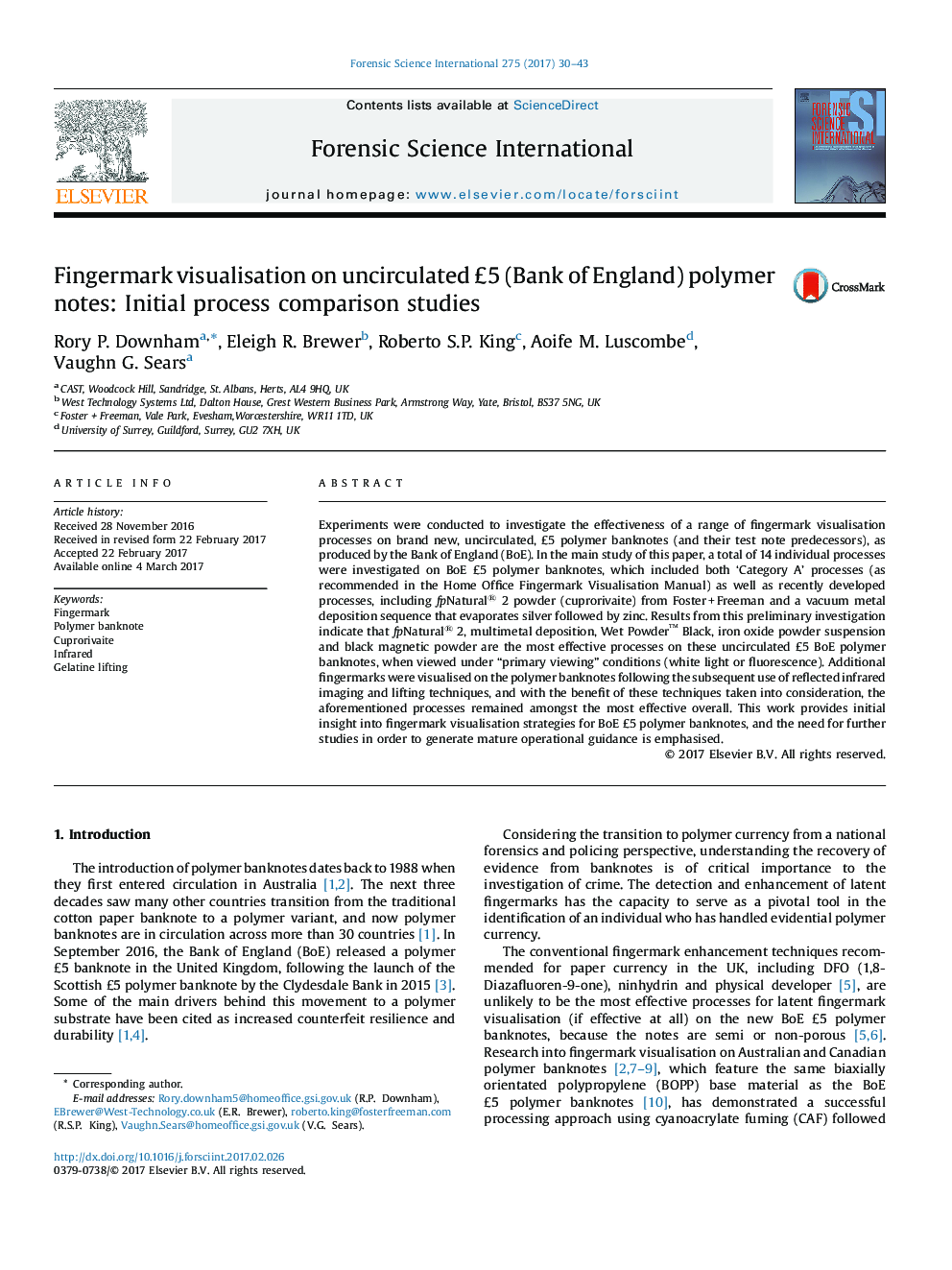| Article ID | Journal | Published Year | Pages | File Type |
|---|---|---|---|---|
| 6462326 | Forensic Science International | 2017 | 14 Pages |
â¢Fingermark processes were tested with natural marks donated on to banknotes.â¢14 processes were compared, including the recent fpNatural 2 (Nat2) powder product.â¢Initial assessments were made under typical process (primary) viewing conditions.â¢The addition of infrared reflection and lifting techniques improved capability.â¢Nat2, multimetal deposition and powder suspensions showed the greatest potential.
Experiments were conducted to investigate the effectiveness of a range of fingermark visualisation processes on brand new, uncirculated, £5 polymer banknotes (and their test note predecessors), as produced by the Bank of England (BoE). In the main study of this paper, a total of 14 individual processes were investigated on BoE £5 polymer banknotes, which included both 'Category A' processes (as recommended in the Home Office Fingermark Visualisation Manual) as well as recently developed processes, including fpNatural® 2 powder (cuprorivaite) from Foster + Freeman and a vacuum metal deposition sequence that evaporates silver followed by zinc. Results from this preliminary investigation indicate that fpNatural® 2, multimetal deposition, Wet Powder⢠Black, iron oxide powder suspension and black magnetic powder are the most effective processes on these uncirculated £5 BoE polymer banknotes, when viewed under “primary viewing” conditions (white light or fluorescence). Additional fingermarks were visualised on the polymer banknotes following the subsequent use of reflected infrared imaging and lifting techniques, and with the benefit of these techniques taken into consideration, the aforementioned processes remained amongst the most effective overall. This work provides initial insight into fingermark visualisation strategies for BoE £5 polymer banknotes, and the need for further studies in order to generate mature operational guidance is emphasised.
